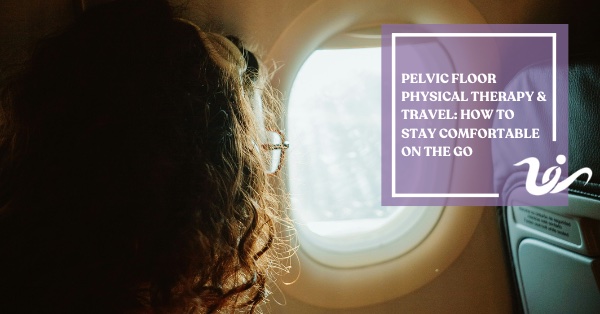Summer is the season for adventures, road trips, and airplane rides—but for those dealing with pelvic floor dysfunction, travel can sometimes bring more discomfort than relaxation. Whether it’s bladder urgency during long drives, stiffness from prolonged sitting, or managing prolapse symptoms while out of routine, traveling with pelvic floor issues requires some extra preparation. The good news? With a few simple strategies, you can enjoy your vacation while keeping your pelvic floor supported and your body comfortable.
Travel-Friendly Stretches to Loosen Up
Long hours in the car or on a plane can leave your body feeling tight, especially around the hips, lower back, and pelvic area. Stretching regularly can help relieve tension and prevent flare-ups. A few helpful moves include seated pelvic tilts, standing hip flexor stretches, and gentle figure-four stretches when you have room to lie down or stand. If you’re flying, take advantage of aisle walks to keep blood flowing and muscles relaxed. Even a quick stretch during gas station stops can go a long way in preventing discomfort.
Stretches that incorporate deep, diaphragmatic breathing are especially helpful. Breathing fully into your belly allows the pelvic floor to lengthen and relax, which can counteract the stiffness and over-activation that often comes from sitting for too long. Aim to do a few of these stretches every couple of hours while traveling.
Supportive Posture and Smart Seating
Posture plays a big role in how your pelvic floor feels. Slouching or rounding your lower back for extended periods can place extra pressure on your pelvic floor muscles. Try sitting on a firm surface with a small lumbar pillow or rolled-up towel behind your lower back to maintain a neutral spine. If you’re prone to tailbone pain, consider bringing a cushion with a cut-out design for added comfort.
On the road or in the air, adjusting your seat to support your pelvis and keeping both feet flat on the floor can help distribute pressure evenly and prevent muscle fatigue. If you use a pessary, make sure it’s fitting comfortably before you leave, especially for extended trips.
Stay Hydrated and Listen to Your Body
Don’t limit fluids to avoid bathroom breaks—dehydration can actually irritate the bladder and worsen symptoms. Stay hydrated, eat fiber-rich snacks to prevent constipation, and give yourself permission to rest when needed. With a little planning, you can stay comfortable, confident, and fully present for your travels.


